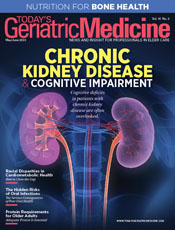
May/June 2023
Editor’s Note: Bridging the Racial Divide in Health Care It may seem as if it’s only relatively recently that due attention has been given to the existence of racial disparities in medicine. However, health inequities have preoccupied researchers for at least 40 years, with the earliest investigators speculating that poverty and lack of access to care were the underlying reasons for the fact that racially marginalized populations tend to be sicker and have shorter lifespans than their white counterparts. However, subsequent research emerging in the mid-1980s and continuing to the present day has shown that the reasons are much more complex and multifactorial. In 2005, for example, a report by the Institute of Medicine, now the National Academy of Medicine, demonstrated that poverty doesn’t account for the fact that white Americans tend to be healthier and live longer than Black citizens, pointing instead toward inferior quality of care provided to them, one likely driven at least in part by implicit bias of the health care providers. Not the sole cause, yet it’s a finding duplicated in numerous studies since, such as those demonstrating that physicians are more likely to prescribe pain medications to white rather than Black patients or that a disproportionate number of Black medical residents are forced out of their residencies or unfairly dismissed. At the same time as some researchers try to untangle the consequences of these inequities—others, along with health care providers, academicians, and advocates—work to increase awareness and explore solutions. Hence the creation of health equity organizations such as the National Collaborative for Health Equity, the National Partnership for Action to End Health Disparities, the National REACH Coalition, and many others, and educational courses such as Harvard University’s Reducing Racial Disparities in Healthcare. Here, we’ll focus on research about the range of medical consequences of health care disparities. In this issue, for example, contributor Lindsey Getz reports on research demonstrating that certain ethnic populations are more prone than others to developing glaucoma, and Jamie Santa Cruz looks at what’s behind the difference in cardiometabolic health between white individuals and those of Black, Hispanic, and Native American populations. — Kate Jackson |
